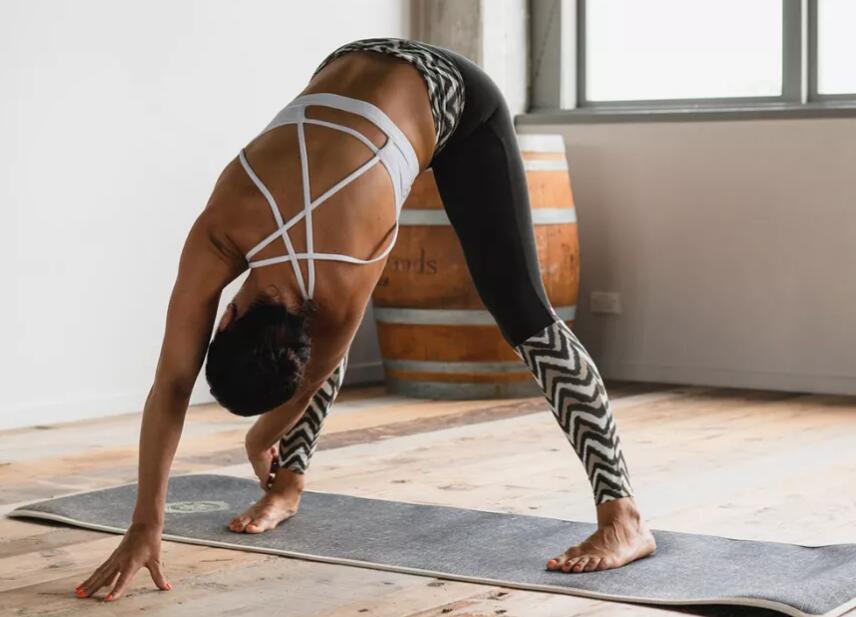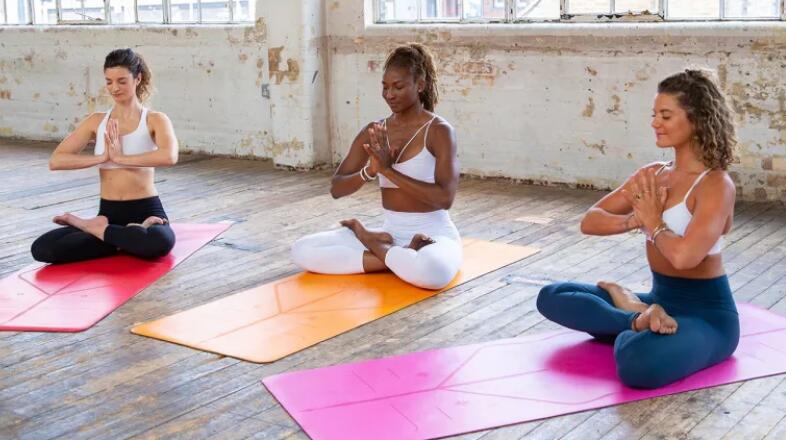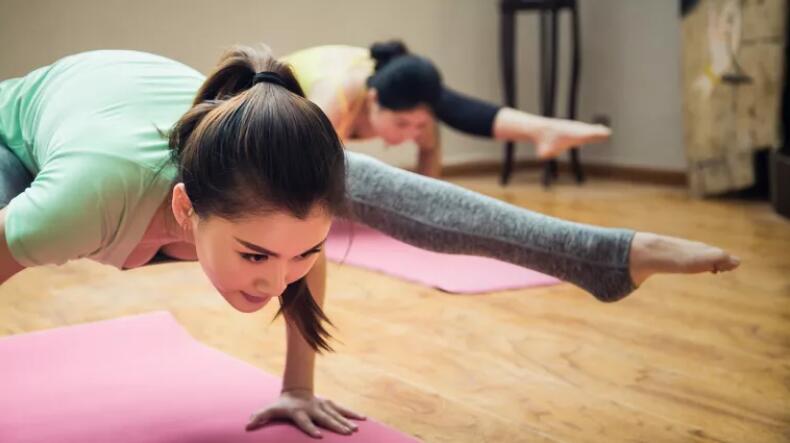What's the best mat for hot yoga? Top tips on what to look for
16/03/2021

Looking for the best mat for hot yoga? We're here to help. When it comes to choosing a yoga mat, the choices are seemingly endless. There are plastic PVC mats, eco-friendly natural rubber mats, cork mats and mats that have a polyurethane top layer. But some mats will be better for hot yoga than other.
In our best yoga mats guide, you'll find a range of picks for any type of practice – including hot yoga. Alternatively, read on for some guidelines on what to look for in the best mat for hot yoga, and how to keep your purchase grippy and pleasant-smelling for many practices to come.
WHAT SHOULD I LOOK FOR IN A HOT YOGA MAT?
The type of material your mat is made from will have a big impact your experience during a hot yoga class. Choosing the 'wrong' material will lead to a very disappointing and rather frustrating yoga experience. Hot yoga normally involves a reasonable amount of sweating so let's make this the focus for finding the best mat. We want the material of the yoga mat to stop us from slipping and sliding all over the place when holding a downward dog or a warrior pose, for example. Of course, if hot yoga involves a lot of sweat, it's also going to involve a lot of cleaning. The material of the mat needs to be easy to clean after each class.
WHAT MATERIAL IS BEST FOR A HOT YOGA MAT?
Our number one tip is to read up on the types of materials yoga mats are made from. This will enable you to make an informed choice and not regret your purchase. Don't be swayed by colours and designs here but look into the details and read the reviews about a mat's grip before purchasing.
Our choice would be to go for a yoga mat with a polyurethane top layer as they provide the best grip and ultimately this is what's going to give you the best experience. These mats are unbelievably slip-free and will give you the most grip even if you're sweating a lot in your hot yoga class.
Beneath this top layer is a natural rubber mat, making them relatively planet-friendly, but if that's a major concern you can also opt for an eco-alternative to the typical plastic polyurethane layer (like the one found on our #1 yoga mat at the moment, the Liforme yoga mat). These can be just as effective in terms of grip, and mean your whole mat is biodegradable once it's come to the end of its life.

One downside is that moisture isn't good for these types of mats. They are porous so water and sweat can stain them. If you do perspire a lot, our choice would be to opt for a plastic PVC mat. Although not eco-friendly, sadly, they may give you the best experience of hot yoga and are super easy to clean.
While in our experience, they're not quite as grippy as a rubber mat with a polyurethane top layer, they'll still provide a decent surface to practise on (even when you're a bit sweaty). They also have the major benefit of being 'closed-cell structures', which means they don't absorb water. As a result, they're they much easier to clean effectively: you can wipe them down as and when you need to, without the moisture sinking deeper, and doing so won't affect their non-slip over the long term (the PVC mats we've used are all still grippy 8 years down the line!).
Another good eco-friendly alternative to consider would be a cork mat. These provide surprisingly strong grip, even when wet. Cork is also naturally anti-microbial and water-resistant – although on the mat we tried, we did find sweat left marks on the surface.
Finally we have natural rubber mats. These are eco-friendly and do offer sufficient non-slip qualities. However, over time, repeated contact with your hands and feet will gradually wear away certain spots on the mat. This isn't necessarily increased due to sweat, but just an issue with rubber mats in general. They are one big eraser! Although on the plus side, it does mean they don't need heavy cleaning, as the top surface is effectively being removed over time.
KEEP YOUR MAT CLEAN
If you are going to be perspiring a lot during your hot yoga class then it seems sensible to also look for a mat that you can keep clean easily, as well as swotting up on how to clean your yoga mat. PVC mats are the easiest to clean and can even be placed in the washing machine! They can take a lot of water without it affecting the non-slip qualities of the mat and you can use oil sprays to keep them smelling fresh.
However, natural rubber mats and those with a polyurethane top layer (eco or otherwise) are a little more sensitive to a deep clean. They can't be placed in the washing machine. Instead, you can keep them clean by using a mild, soapy water spray and a towel. Spray the mat (not so it's soaked as remember, they are porous) and gently wipe it down with a towel. Avoid scrubbing these mats, especially the natural rubber mats, as they are not built to withstand this rigorous cleaning. Avoid using homemade oil sprays on these mats too as they can leave stains or interfere with the non-slip qualities.
Cork mats are naturally anti-bacterial and self-cleaning so theoretically they don't need cleaning after a hot yoga class. They also repel odours, so no bad smells should escape from these mats.

IS IT WORTH TRYING A YOGA TOWEL FOR HOT YOGA?
Another option is to use a yoga towel (you'll find our top picks in our best yoga towel guide). These can help to keep your mat fresh and avoid the wear and tear of sweat, especially if you're investing in a pricey number. One thing to bear in mind is that they are not as grippy as the mat itself so you may need to work out whether grip or a fresh, smelling mat is more important for your own practice.
ARE EXPENSIVE MATS BETTER FOR HOT YOGA?
We know it's tempting to buy a cheap mat and hope for the best but buying the ‘wrong' mat can alter your experience of hot yoga when really it might not be the yoga that's the problem, but the mat.
If you buy a cheap mat it's less likely to last (although this isn't always the case, some of the best mats we've used have been cheap). However, the reason it might be less likely to last for hot yoga could be one of three reasons; the material won't provide the required grip, the material will disintegrate from heavy wear and tear and/or excessive moisture or you will get rid of it because it's a frustration during your practice. The price tag associated with yoga mats are usually an indication of their ability to perform as a long-term investment. Our advice is to use the price as a guide alongside understanding what material would be best for you for hot yoga.